
Last summer at Eurobike 2022 Bryton sorta-kinda-but-not-really announced their new Bryton Gardia R300 cycling radar. For those unfamiliar, a cycling radar detects overtaking vehicles (or cyclists/mopeds/etc…), and warns you on your bike computer/watch. At the time of announcement it represented an interesting option, as both Bryton and Magene were basically dual-announcing new radar units that were more budget-friendly than Garmin’s existing lineup of Varia radar units. Bryton’s R300 has a list price of $129, whereas Garmin’s current generation Varia RTL-515 is $199 (albeit often lower, around $149).
However, as every media outlet pointed out at the time it was announced – this isn’t a category where a product can have certain types of bugs. A cycling radar has to have a perfect record at detecting overtaking vehicles. There’s no room for exceptions or occasional misses – or so-called ‘false negatives’.
And as you’ll see here, the Gardia R300 shows promise, but ultimately suffers from a number of bugs that need to be resolved before it can be recommended.
Finally, it’s worth pointing out that while you’re seeing an influx of media reviews released today due to a review embargo, the reality is that Bryton has been selling these units in Europe and Asia for months. Any consumer could have gone and bought these units in certain countries for many months. The point is, this unit isn’t actually being released today. It was released to regular consumers back in November/December in a number of countries.
Speaking of which, Bryton sent over a loaner radar unit to review. As usual, after I’m done, it’ll go back to them. That’s just how I roll. If you found this review useful, you can use the links at the bottom, or consider becoming a DCR Supporter which makes the site ad-free, while also getting access to a mostly weekly video series behind the scenes of the DCR Cave. And, of course, it makes you awesome.
In the Box:
Here’s a quick look at what’s in the box of the Bryton unit:
Inside you’ll find the radar itself, some mount components, mount adapters, and then a USB charging cable. Oh, and a manual:
Here’s a closer look at the mount options. Essentially you’ve got the part that wraps around your seat post, and then you’ve got two rubber inserts which work with different seatpost types (such as round ones, aero seatpost, and d-style seat posts).
Note that technically there are two different SKUs, the R300 and R300L. The only difference is that the R300L also comes with a D-seat-post mount adapter, whereas the base R300 doesn’t. Frankly, that’s a very silly SKU separation.
And then of course that sprawling manual. Nobody can accuse Bryton of wasting paper here. They printed something on every last centimeter of this thing:
In weighing the unit on my kitchen scale, the Bryton came in at 70g (no mounts), the Magene 64g, and the Garmin RTL-515 72g. Here’s how it compares size-wise to the Garmin and Magene units.
And thickness-wise, you can see they’re all basically in the same ballpark:
With that, let’s dive into it.
Basic Usage:
I’m going to mostly go a bit light on this section, mainly because I think most cyclists at this point interested in a cycling radar kinda know what it’s about. As noted above, they’ve been around for nearly a decade now. The general gist of it is that the radar detects overtaking objects – be it a car, cyclist, bus, or even a train. It’ll then display them on a bike computer or phone app.
The cool part here is that this is no longer a ‘Garmin only’ game. Virtually every meaningful bike GPS computer brand out there now displays cycling radar data, same goes for watches from Garmin. Atop that, there are even 3rd party apps that can display cycling radar data, plus of course, apps from the radar companies themselves, including Bryton and Garmin.
Maybe I’ll expand this section down the road for those new to radar, but for today, let’s cover the basics of the Bryton and usage with various devices. First up, there’s the unit itself. It’s got a button atop it for turning it on, as well as changing the light pattern – such as steady/blinking.
Meanwhile, there’s a USB-C charging port at the bottom. That’s something lacking in Garmin’s Varia RTL-515, though it is in Garmin’s combined camera variant, the RCT-715.
Like most cycling things, the Bryton R300 is waterproof spec’d at IPX7, which means you can fall into a canal up to 1 meter deep for 30 minutes. After that, you’ll need to re-assess your life situation.
Bryton has published the following specs in terms of battery life and also the available light modes:
– High solid-on (20 lumens): 8 hours
– Low solid-on (5 lumens): 12 hours
– Group ride (12 lumens): 11 hours
– Night flash (12 lumens): 17 hours
– Day flash (73 lumens): 17 hours
– Light off (zero lumens, radar only): 24 hours
It’s a bit tricky to figure out battery life in various conditions. But for reference, on today’s 1hr 45min ride, I went from 64% to 40% using the High Solid-On option. This puts it roughly in the ballpark for their battery claims.
When it comes to mounting, in the box as noted earlier you’ve got a few different mount styles, which are easy to snap onto your seat post, like so:
Notably, the light is visible from the side, as you can see above, meaning that it’s not purely backwards facing. In terms of visibility, Bryton claims a viewable light distance of 1.6km. That seems reasonable, as it’s bright AF.
Next, you’ll pair it up to your bike computer. I’ve paired it to Garmin, Hammerhead, and Wahoo units. Depending on the bike computer you have, you can either search for all nearby ANT+ sensors, or just cycling radar sensors. The Bryton unit advertises itself properly as an ANT+ cycling radar, which is an open standard for cycling radars. It allows them to all communicate using ANT+ with a defined protocol.
As such, the following manufacturers support the ANT+ Cycling Radar profile at this time:
– Bryton cycling GPS units
– Garmin Edge cycling GPS units and various Garmin watches
– Hammerhead Karoo cycling GPS units
– Stages Dash cycling GPS units
– Wahoo ELEMNT cycling GPS units
In addition, the Bryton unit also supports the bike light profile as well, which means that it can be controlled using the bike lighting controls on some bike computers. Note that not all bike computers support the ANT+ Lighting profile. For example, Garmin and Hammerhead do, but Wahoo doesn’t.
As for the ANT+ Radar side, here you can see it pairing to a Wahoo ROAM V2:
Once paired up, depending on the bike computer brand, it’ll show you a small icon in the corner indicating the radar is active/connected. This is useful so you know if the unit has disconnected for some reason or otherwise run out of battery/etc. Not all brands show this.
Getting to its core functionality, it’ll show you overtaking vehicles using a small stripe along the side of the bike computer. This strip will typically appear and the unit will chirp that a car is within range. Then it’ll show you a small car icon for overtaking vehicles. That vehicle icon will move upwards to the top, which means it’s getting closer to you. Once it passes you, most bike computers will show a brief moment of green strip and chirp an “all clear” beep.
I’ve got the Karoo 2 off to the side here, so you can see the overtaking vehicles on the strip. Also, you’ll notice the light on the Bryton radar changes and starts flashing when a car is within range – as a way to attract attention to the driver of your existence.
In cases where a vehicle is at a significantly higher speed than you, it’ll also change the coloring to red, and typically give a different tone. Further, the unit can detect multiple vehicles concurrently. You’ll see multiple icons on the screen, like below:
Again, how all this displays varies slightly between companies. Heck, in Wahoo’s case you can even customize the icons to have them be chickens or Star Wars Death Stars if you want. But the general goal is that all companies display this the same way, in the name of safety. Some companies allow slight customization of the chimes/tones, but all companies have a specific/unique radar tone that’s not used somewhere else in the system. Again, the idea being that your brain instantly recognizes that’s a radar tone and not a course/workout/etc tone. In terms of the Bryton radar compatibility – all of this works exactly as expected at a protocol/compatibility level to 3rd party bike computers.
It should be noted somewhere that Bryton says they detect vehicles up to 190m on their site, yet the back of the box also says “190 avg 150m”. That seems like a weird way of putting it. In my testing, yes, there are perhaps times where it hits 190m out (just like Garmin Varia can too). Yet there are also plenty of times where it’s only 20-30m out (not an issue on Varia). I get the theory of putting the higher number there, but this seems like it’s Bryton trying to put something on paper that’s not actually real, in the name of spec upmanship.
One unique feature on the Bryton radar not on the Garmin ones, is automatic brake detection illumination. In other words, it’ll illuminate as you slow-down/brake. This uses an accelerometer inside the unit to detect you slowing down, and then illuminates the back light for a few seconds.
Beyond bike computer connectivity, Bryton has their own app, which allows for configuring of a handful of alert/lighting settings, as well as acting as a display in the event you want to use your phone instead of a bike GPS. First, here’s the configuration options. This also includes updating firmware, all of which occurs via Bluetooth Smart:
Then, there’s the usage as a display. In this case, you’ll see the car approaching, as well as options at the bottom to toggle the lights and alerts on/off. You can see the coloring, and then it goes to green for ‘All clear’:
This is all basically identical to what Garmin did for their app, which again makes sense when it comes to conforming to standards around safety. The goal here being to use this in cases where you don’t have a bike computer, but use your phone on your handlebars – such as perhaps with commuter bikes, e-bikes, cargo bikes, etc…
Accuracy & Issues:
As I said in my intro, in the cycling radar world, the most critical element is the unit actually detecting cars. If a unit fails to do so, its usefulness as a radar is a liability. You no longer trust it, or worse, you mistakenly think the coast is clear – only to find a car squishing you. Of course, ideally, you’d always double-check over your shoulder, but again you need absolute trust that it always detects overtaking vehicles.
In the case of Garmin’s Varia radar devices, missed overtaking vehicles simply don’t exist. We’ve got nearly a decade of data showing that missing vehicles doesn’t happen – a so-called false negative. If you look at the Garmin Forums, there’s literally no instances of this reported that I could find in the last two years of posts. Nor have I heard of a single one offhand or in comments elsewhere.
Which gets me to my Bryton R300 radar issues. These are classified in various piles, over a number of rides, in varying conditions. These are long rides in a variety of conditions, from glorious but cold sun, to fugly Dutch sideways rain, to just overcast. Ironically, it performed worst in the clear conditions. I will note that for the vast majority of my rides, the Bryton basically performed identically to the Garmin Varia Radar – usually within +/- 1 second.
Note: Please see the terminology section at the end for some understanding of the nuances of cycling radar systems.
Here’s what I’ve had on the most recent firmware:
1) Entirely Missed Vehicles: Last week on a 3hr+ long ride on sunny farm roads, about 1-3 times per hour, the unit would simply fail to detect overtaking vehicles. These were not slowly approaching vehicles that matched my speeds, but rather, vehicles going about 30MPH/50KPH and on very clear road conditions. Nor were these tiny cars, but rather just run-of-the-mill small SUVs, sedans, etc… In these instances, the Varia radar operating at the same time detected the vehicles without issue. Finally, this was on open farm roads – in fact, this very road shown below on this very nice sunny day:
In this case, I don’t have any video footage on that ride, because frankly, I didn’t expect it to miss vehicles. I then started creating concurrent footage on future rides (which is mostly a ginormous pain in the butt to screen record across multiple bike computers from multiple radar units, plus a GoPro to last that long, then sync all the footage together with overlays, find the exact moments amidst dozens of passes per hour, etc…).
2) Latent Vehicle Detection: Equally, on some rides I’ll see extremely latent detection of vehicles. In these cases, Varia Radar will detect the car about 100+ meters out, but Bryton won’t. It won’t be till the last second, about 2-4 car lengths back, that Bryton realizes the car is there. A similiar problem is where the detected vehicle simply falls off tracking if the speeds get too close. While that’s not unheard of with Varia, you can see in the video how bad it is on Bryton. There’s an example of that at 8:42 in the video (direct link to timestamp in video).
3) False detection alerts: By far the most common issue I and others are seeing is false positives where the unit briefly reports a vehicle at the far end of the range, in cases where no vehicle exists. These are the least worrying because they are like brief radar blips in Top Gun, and disappear without actual safety risk to me. And while false positives occasionally happen on Garmin devices, they are almost always explainable by a glassy/reflective building mirroring oncoming traffic – often in dense city areas – where usually radar is kinda useless anyways due to density. I’m not worried about when Bryton does the same. Instead, it’s the phantom alerts out on empty country farm roads that chirp and then instantly disappear. Literally, even while sitting here writing this in an empty/quiet room with the unit on/paired off to my side, every once in a while it briefly false detects randomly. There’s an example of that in the video at 10:05 (direct timestamp video link).
In addition to the above core major annoyances, I’ve got two more less serious but more notable items:
1) Bryton does not appear to match Garmin’s high-speed dangerous overtaking vehicle alerting scheme. Basically, when a vehicle reaches a specific threshold, Garmin Varia units will signal to the bike computer to flag the vehicle as red, due to high overtaking speed. However, in the case of Bryton, I’m getting a mismatch here where I’ll get red alerts on the Garmin Varia side, but it’ll only be flagged as a generic-level vehicle on the Bryton side. My guess here is they’ve got either a slightly different detection threshold, or calculation aspect. You can see this at 6:18 in the video (direct timestamp video link).
2) There are distance mismatches between the Bryton app and existing bike computers. This might be because Bryton assumes their radar can see upwards of 190 meters, whereas Garmin states up to 150 meters. So if you have a bike computer and the Bryton app side by side, they’ll visibly show you different distances.
3) It doesn’t quite seem to detect as many cars as Varia does properly. While hidden cars, that is cars obscured from visible view behind other cars, are still a problem with Varia or just about any technology, Bryton’s unit doesn’t quite seem as good as separating out multiple cars that Garmin’s Varia does separate out. Meaning it might only show two cars, when Garmin can manage to show three cars. Here’s an example of that on the street, where the Garmin unit shows two cars, but Bryton just one car. Or, at 5:27 in the video in multiple locations (direct timestamp video link).
Again, I’m less concerned about these last three items than I am about the first three core items.
Instead, the complete missing of overtaking vehicles at good speed is my primary concern. Bryton says they’re investigating it, but don’t have an answer as to why detection failed. So far that’s only happened on one ride for me, albeit, my only sunny ride. The rest of the rides were more dreary.
—
A quick note on what things are or aren’t considered incorrect when it comes to cycling radar. For those that have been around cycling radar for a while, these will be old hat:
1) Detecting bikes/people/motos overtaking: This is actually correct, the radar will usually detect/show any object that’s overtaking you. Be that a runner, cyclist, or moped. Heck, I can even get it to detect airplanes landing on a runway next to a particular bike path in Amsterdam. Same goes for a high-speed train line that’s next to another bike path in Amsterdam. It’ll scare the crap out of you to have a high-speed train trigger the dangerous alert and then two seconds later it rushes past, but it’s doing its job: It’s showing you things that are overtaking you. Plus, it’s kinda nice to know a cyclist is coming up on you – especially cause they’re usually silent. Here’s an example of that working properly at 8:06.
2) Cars disappearing when maintaining exact same speed: If you’ve got a car that’s behind you and maintaining the exactly same speed as you for an extended period of time, it’ll likely disappear off radar. Again, this OK/makes sense, as it’s no longer ‘overtaking’. In theory, the moment it starts accelerating again and closes the gap to you, it’ll reappear. Bryton isn’t quite as good at this as the Varia though, and seems to disappear steady-state cars more quickly than Garmin does – often giving the all clear when in reality the coast is very much not clear. Here’s an example of that working poorly on Bryton, but better on Garmin, at 4:15.
3) Detecting traffic on parallel roads/highways/paths/runways: Again, this is also correct, albeit undesirable. If a highway runs next to your bike path/road, and it’s got traffic close enough, cycling radar will detect it as overtaking vehicles. At 100m out, the radar simply doesn’t know that a road exists or not, it just knows that 100m out there’s a vehicle that’s closing the gap to you. This is probably the singular area where cycling radars can be a bit frustrating. Here’s an example of that working as expected/designed at 8:31.
4) The unit only shows 1 car, when in reality there are many behind it: This is normal, because the radar can’t see through other cars. Instead, it’s going to show you one icon/car for each vehicle at different speeds that it can see. Thus, if you have a lineup of traffic behind you, you might only see the closest car, but as that car gets closer it’ll typically split into two once it detects the next car. Here’s an example of how the Garmin and Bryton units differ at 5:52.
Again, some of these are radar quirks that might take a ride or two to get used to. But once you understand how it works, most people are pretty happy with cycling radar units.
Wrap-Up:
When it comes to deciding to make a product, there are certain product categories where you can get away with bugs or quirks in exchange for some other feature or function. Yet for other product types, there’s zero tolerance for bugs or issues. For example, when a company makes bike computers, you can be 98% good on your features, as long as your bugs/quirks are mostly limited to non-critical things. Heck, you can still have annoying AF bugs, and probably still get away with a product people are going to buy.
But when it comes to a safety product, that tolerability for issues quickly becomes zero. And that’s the challenge I have with the Bryton R300L in its current implementation. Now 4 months after release in Europe/Asia, the unit still has false positives many reviewers are seeing, as well as more rare false negatives. And this is some 9 months after they announced it. Meaning, they’ve likely been trying to squash these issues for quite some time, and seem unable to.
And again, in some product categories, you can get away with bugs or significant annoyances. Take, for example, Garmin’s own Varia RCT-715 combo camera/radar unit I reviewed last May. In that case, during my review, I found the entire app portion immensely buggy and basically unusable. Except, despite all the flaws I pointed out in my review (and other people as well), the two things it did properly without fail were radar and safety camera recording. Meaning, that if you set aside the horrific app, then the core safety features were flawless. While I didn’t recommend the product, someone could choose to make that tradeoff if they wanted to (and many people have). However, with the Bryton R300L, that price-to-safety tradeoff is much more challenging.
One could say you get what you pay for. And that’s true. But typically that saying is assigned to service levels or features – not baseline safety aspects. It’d be like paying for a cheaper transatlantic plane ticket, only to find out that the airline might not actually make it all the way from Paris to New York City – instead ending up off the coast of Long Island, ditching in the water. Sure, it got 99% of the way there, but that last 1% is kinda important. Just like identifying 100% of the overtaking vehicles is important, not 99%.
Look, I really want more budget-friendly radar out there. It keeps cyclists more aware, and ideally saves more lives or keeps people from getting injured. I don’t much care who delivers that more affordable radar unit. If it’s Bryton or Magene, great! If it’s Garmin, that’s fine too. And if it’s some other company – that’s awesome too. But whoever it is, needs to be reliable enough to trust with absolute certainty. I hope Bryton can sort their issues out, but until then, it’s a pass for me.
With that – thanks for reading!
FOUND THIS POST USEFUL? SUPPORT THE SITE!
Hopefully, you found this post useful. The website is really a labor of love, so please consider becoming a DC RAINMAKER Supporter. This gets you an ad-free experience, and access to our (mostly) bi-monthly behind-the-scenes video series of “Shed Talkin’”.
Support DCRainMaker - Shop on Amazon
Otherwise, perhaps consider using the below link if shopping on Amazon. As an Amazon Associate, I earn from qualifying purchases. It doesn’t cost you anything extra, but your purchases help support this website a lot. It could simply be buying toilet paper, or this pizza oven we use and love.

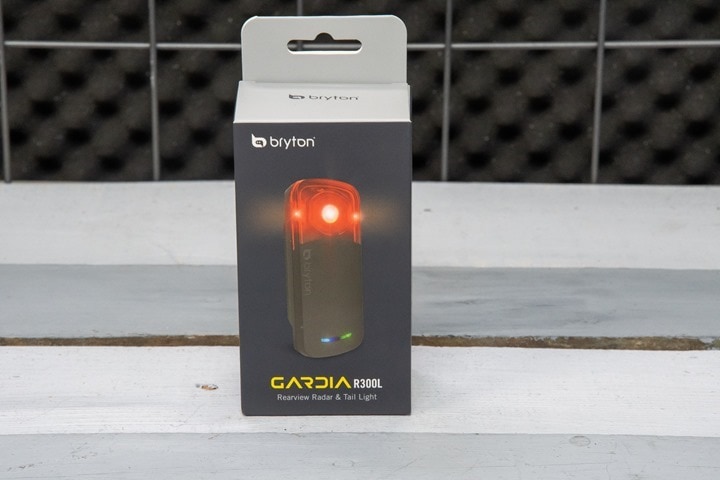
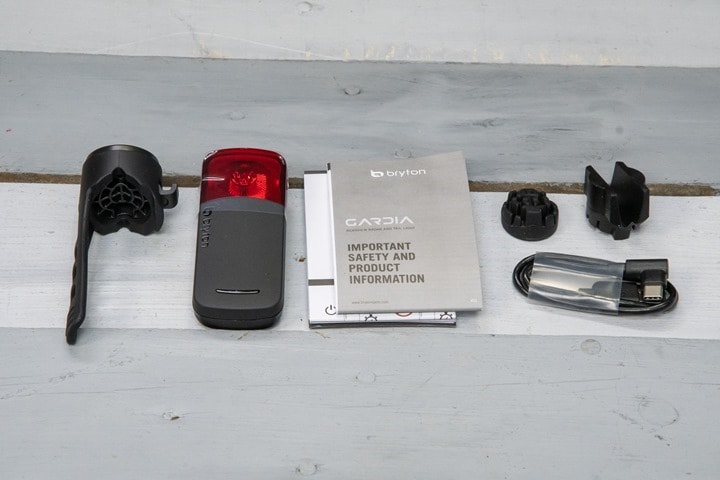
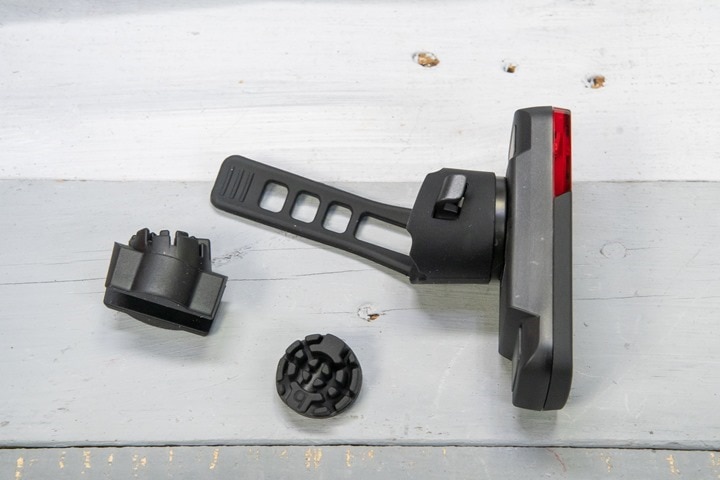
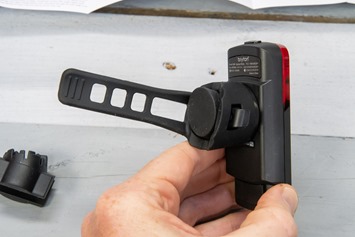
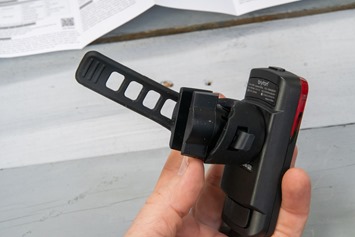
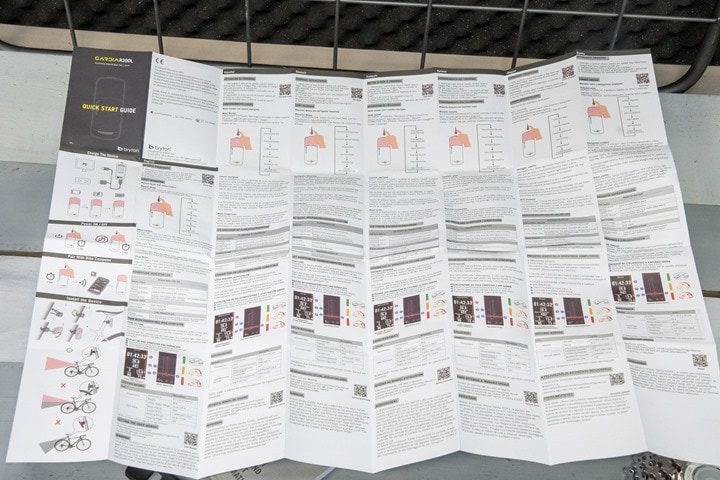
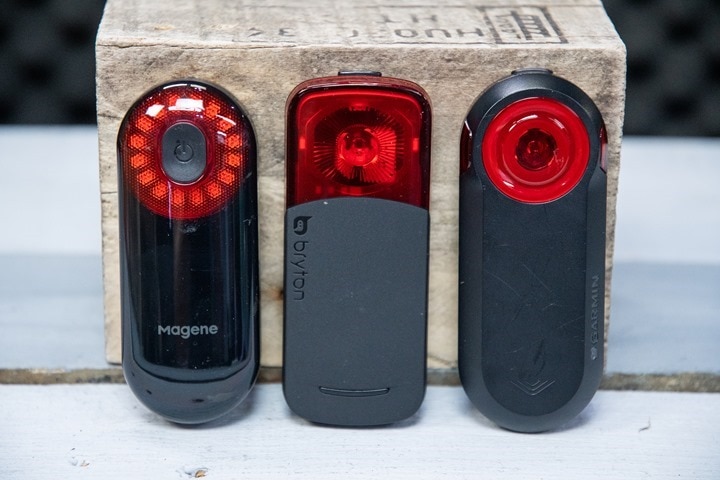
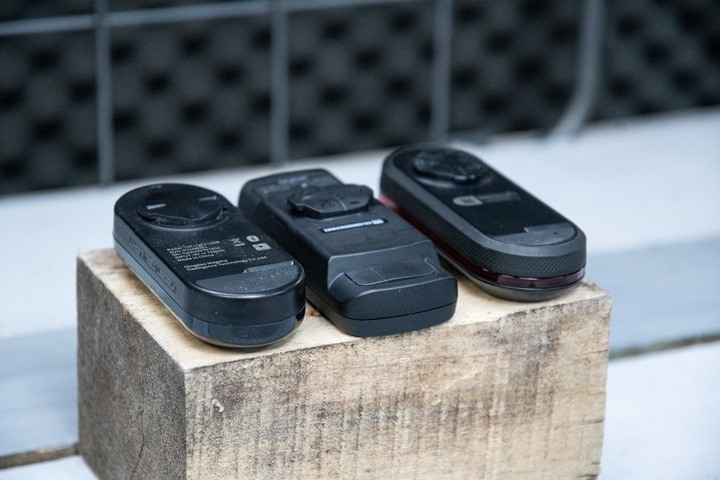
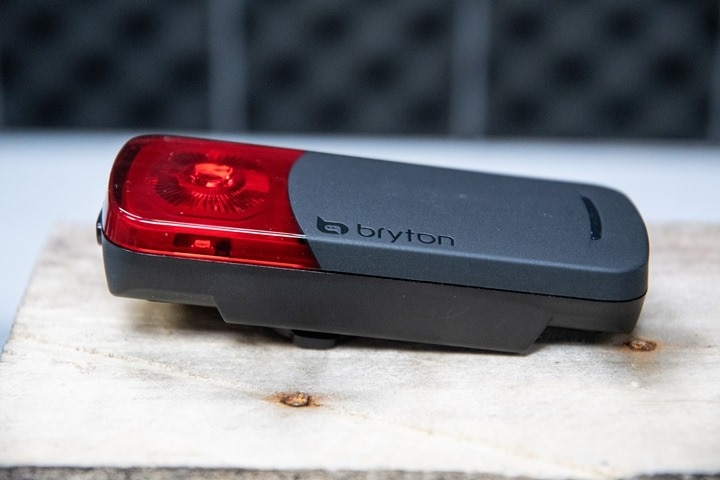
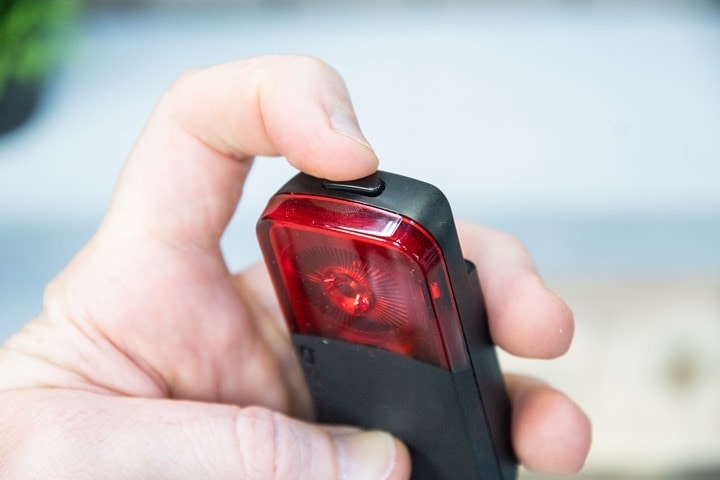
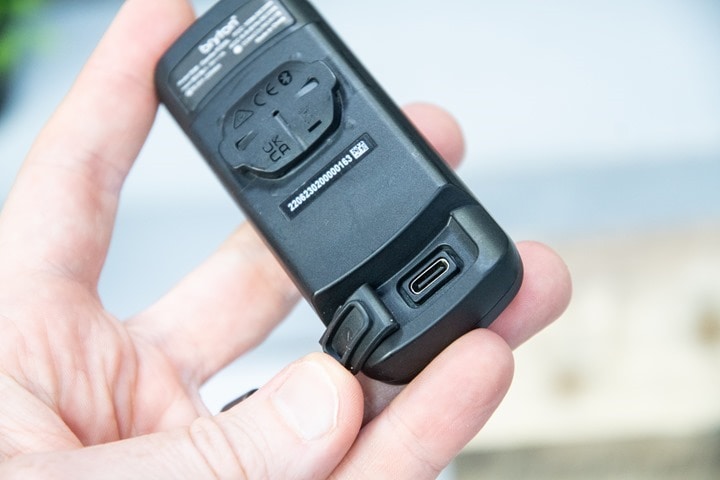
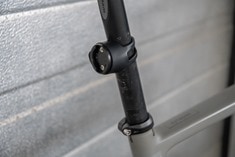
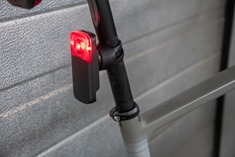
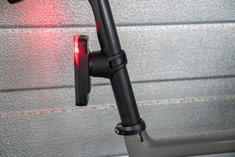

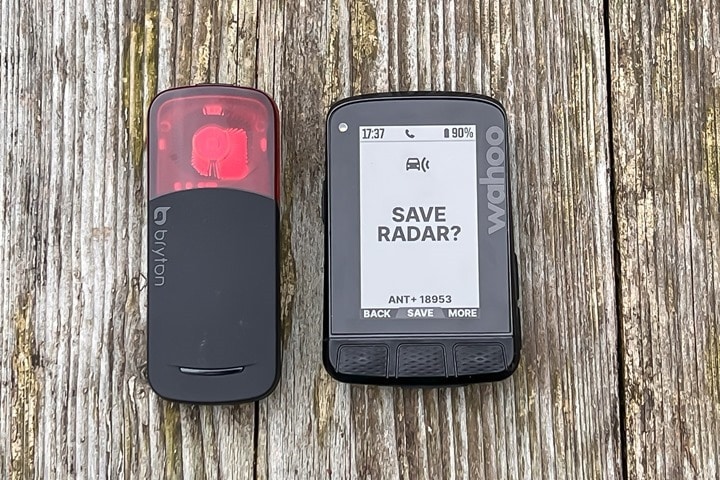
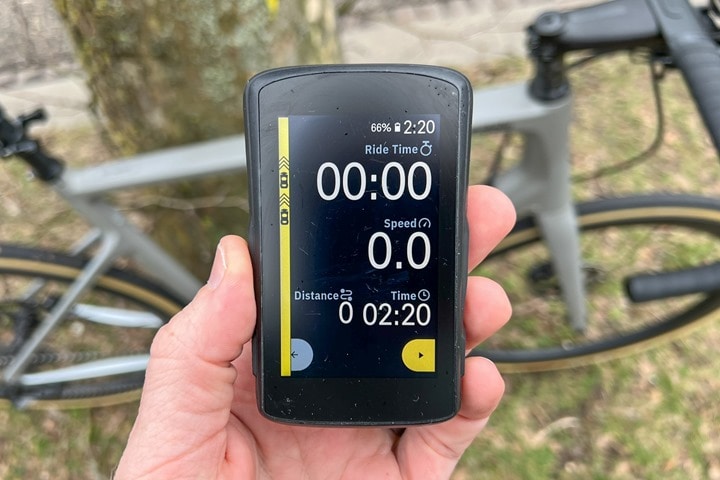
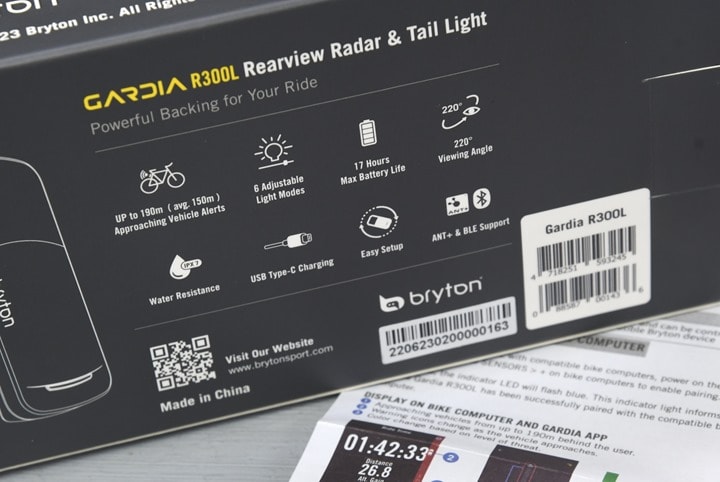
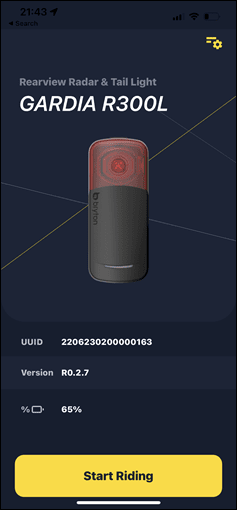
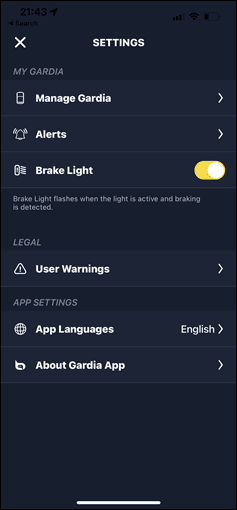

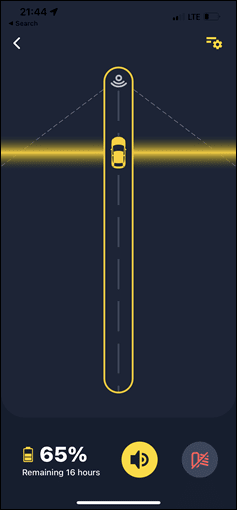

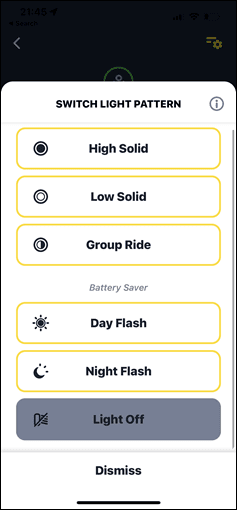
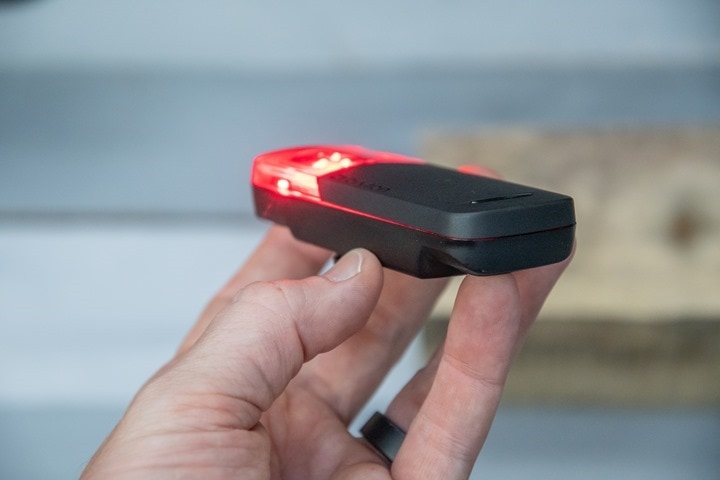
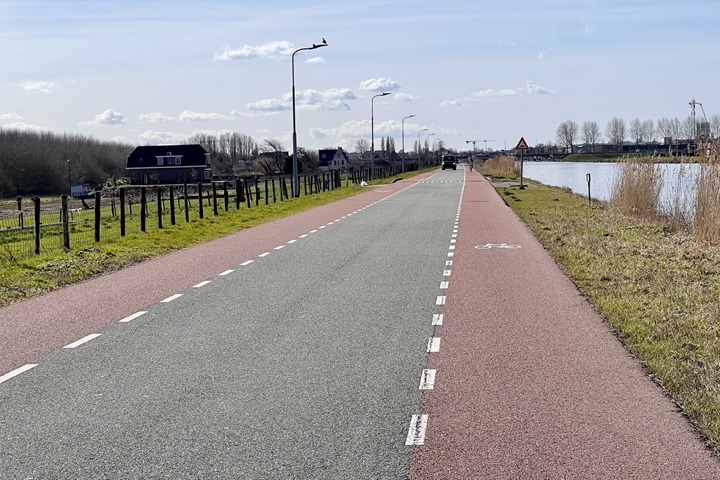

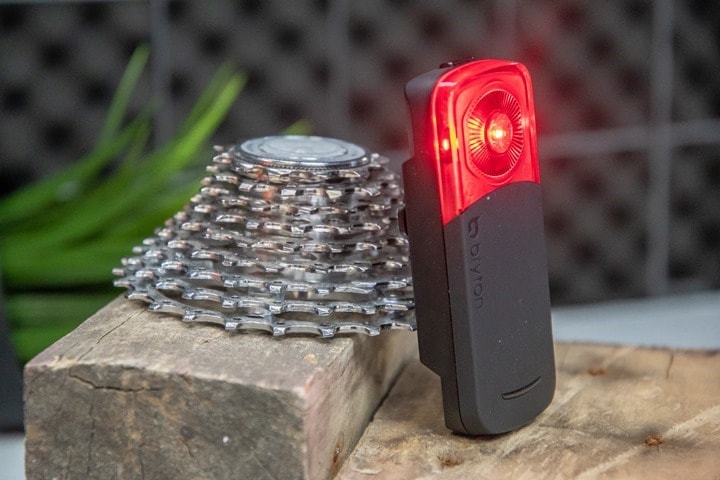
















Heads up that the audio on the YouTube video is stuttering/messed up.
Icks. Something went substantailly sideways there. Re-upload is almost finished… :(
Wahoo needed to release a Radar. Instead of releasing a steerer thingy for RGT….sometimes I just don’t understand the logic.
At least in Europe you can easily get the Varia 515 at around 135 EUR on Prime day/BF, so the 129 USD it’s way too high to be even taken into consideration.
Yup, it pretty much stays at max 149EUR here, and often far cheaper.
But even in the US, the Varia is often at $149 on sale, or $160 with various REI/etc deals. Right now for example, the RTL515 is $160 due to the REI 20% off coupon (and works with that one). And then there’s the even cheaper RVR315 if you don’t need/care about lights.
If running multiple radar units it is possible one could interfere with the other. Have you tried this unit without other radar units on your person/bike?
First, I’ll point out that I’ve run multiple units for years in various tests between generations without ever seeing any impact or difference. The same goes for every other reviewer out there.
Nonetheless, yes, I also ran seperate tests on quick test rides around town – and saw the phantom and delayed notifications. As noted, I even got phanton danger alert notifications just sitting quietly at night on a desk typing the review.
Well, I’ve had two false negatives on my Garman 515
I’m sure someone’s had them somewhere, but it’s exceptioanlly hard to find any forum/review/etc comments about people seeing a false negative.
I’m hoping that most people are reasonable and will understand this isn’t perfect. But IDK if anyone is reasonable anymore. I’ve never mentioned it before because I understood that it was possible.
I quite often miss some of the cars then they are stacked together.
Yeah, stacked cars are mostly fine to miss ones hidden behind others – as long as it keeps letting you know there’s still at least one car back there.
For example, the Bryton doesn’t seem good at multiple cars at all, but that’s not what annoyed me. Instead, it was that it would give the all clear momentarily, and then say “Oh wait, another one” – whereas Garmin never gave an all clear.
Back when you reviewed the Varia RCT715 I commented about my problems with false negatives, mostly with notifications disappearing when a car didn’t pass for some time, and the signal not coming back when they did finally overtake. That problem disappeared when I changed computers. In retrospect I was having other connection issues with the old computer, so that should have been a clue, but I missed it. With the new computer the Varia performance is excellent.
Yeah, separating out signal/bike computer issues vs radar issues is always key.
The other day on one of the rides I was loading a very fresh beta on one of the Edge units, and it was having dropout issues on the Varia – but you could see it was just that unit and just the Varia, because it was clear about the Varia disconnect. Whereas not all bike computers are clear as clear about it.
(That beta turns out to be having a sensor issue problem…)
How does the bungee seatpost connector compare to the Garmin rubber band style mount?
I’ve found Garmin’s mostly reliable (fell off twice over thousands of miles), but it makes me very nervous on bumpy gravel/off-roads.
Would be nice to have a more secure version.
Also, more options to mount with variable bikepacking/rear facing gear.
It’s basically a wash to me. That said, there are tons of 3rd party mount that screw/secure it: link to amzn.to
Thanks…as much as I bitch and moan about having to have so much ‘garmaizing’ in my cycling life, I appreciate and trust my life to their radar. I’d like to leave the platform but, as you so fantastically show, it ain’t easy! Kudos!
Ray, typo:
“Detecting traffic on a parralle roads” — no “a” and should be “parallel”.
“Nor have I heard of a single one offhand or in comments elsewhere.”
Ray, I’ve had 1 false negative. A car was behind me and when they turned left, the car behind them was not picked up until the moment it was passing me.
Over a few thousand miles this is the only false negative by the RTL515. I’ve had about 20,000 false positives from other riders.
First time for everything…
As for the other riders, those actually aren’t false positives – but by design. Varia is telling you of overtaking cyclists. A lot of people actually like that it detects cyclists, as it makes you aware someone else is there.
Interesting. I wish I could get a different signal or something. When partner riding the number of pings are a bit annoying.
When partner riding – i.e. wifey behind me. She loves the fact the light flashes on my Garmin radar so she knows there’s a car coming. Nice additional use case there :)
She can also pair de RADAR to her headunit via ANT+…multiple connections are allowed
Interesting. I didn’t realize it could pair twice – that’s fun. My wife has her own unit. Our pair rides are mostly just listening to each other’s beeps.
hi, with a rtl500 i see false positives coming from reflections – and then mostly from bigger trucks/lorries – those i pass while they stand at a crossroad (not going my direction) or turning from a cross road to the opposite direction. those false positives are only reported for a short moment and very seldom – the reflection has to hit me at the right moment ;)
so – also garmin units are not perfect – at least the older ones
What I’d like out of one of these products is radar linked to a camera that captures some video when any vehicle that passes within say 1m, and that information (the actual distance of the pass and the video hopefully capturing a number plate) could be used in a prosecution.
For range, ant+ radars give a distance in the range 0-196.875m in increments of 3.125m. They don’t give percent of max distance
Another great review. I agree with your logic that some trade-off in reliability is acceptable for some features but definitely not when it comes to safety features such as this. That one time it fails could be catastrophic. I have a Garmin Varia and can put up with the odd false positive but have only had one time where it didn’t pick up a car approaching from behind and I think in this case it either dropped the pairing with the edge or somehow froze. I turned it off and back on and all good since (in about 3 years of regular use). The misses or late detection you experienced on the Bryton unit would be a deal breaker for me. One failure in 3 years on the Garmin I can accept.
Can’t stop thinking of “Giardia” now!
I have since a year my Garmin Varia radar and is absolutely faultless.
I would not risk a far east product.
I had a Bryton cycling computer full with illogical solutions. It was not comparable with a Garmin product at all.
Someone not used to the Varia might think that it is almost impossible to have false negatives, however as an long-time user I want to report that I’m not relying 100% on Varia’s feedbacks.
I don’t say this to take away anything from the reliability of the functionality of the unit per sè, but on the concept itself of relying on the radar for safety aspects: the radar will not be able to identify a vehicle approaching behind, if you have a blind corner behind you (which I discovered to be the case much more frenquetly that I’d ever thought), and might also have false negatives if the conditions are on the “harder” side: say for example if you are in a group ride and/or the street behind you is not straight, and/or there are trees or houses (all elements that reduces the capability fo the radar to identify cars).
On top of this: I occasionally have false positives, and I’m 100% sure I had more than one false negative in these years of use.
I’m 100% happy with the overall reliability and functionality of my Varia, but I thought it could be useful for other readers to know the full story from a user that actually never claimed on reported these “issues”, as I actually never thought to complaint about the unit.
From what I read here about hte Bryton radar I would conclude only one thing: stay away from the Bryton radar until it works at least as good as the Garmin one (which is fairly/pretty good).
I’m going to pay more attention to this, but I think that I may have had a few false -ves from my Varia in a group ride. I just started regularly doing these last year, and we frequently had 10-20 riders. If you consider that a cyclist has enough of a radar cross section to trigger the Varia, then false -ves due to cyclists blocking the radar is potentially unavoidable.
Whilst it certainly sounds like your Bryton has significantly more issues with false negatives (and positives) than my Varia I definitely do get false negatives – the most common scenario being in 20mph limits where vehicles gain on me fairly slowly. However, I’ve always seen this as largely a non-issue since those vehicles are unlikely to cause me any issues and I always shoulder check before moving out anyway.
Its therefore rare enough and inconsequential enough for me not to have even considered raising on a forum or elsewhere.
But I can’t ever recall the Varia missing a vehicle in the scenario you describe of a fast approaching vehicle on a straight road.
Working radar without light on, I miss this option 515 from Wahoo.
Ray,
What are your thoughts on the Magene radar unit? My perfect solution would be a radar and camera combination device, but the Garmin unit’s lack of image stabilization and other issues make it a non-starter for me. I am a K2 user.
I haven’t spent much time with it in terms of actual accuracy/comparison testing, albeit, it’s been on my bike for a few rides here and there the last few months.
I’m going to throw it on for next week’s rides, and do the same sort of comparison for that unit.
I bought one during the week and have taken it out for one 40km ride so far. It had one false negative – completely missed one car on a quiet country road (maybe it was too twisty?) but otherwise I was impressed – it picked up several cars long before I heard them.
That said, it doesn’t sit well on a d-post due to the traingular shaped mount – it assume a curved. or diamond post. I’ve ordered a Lezyne D-shaped adaptor that they use for their lights (basically it’s an overpriced slice of a rubber cylinder) – hopefully that improves it.
I’m with Paul Hesketh in that I’d like to see this combined with a high def camera that saves a few seconds before and a few seconds after a close encounter detected by radar.
The Garmin RCT715 sorta does that, at a very basic level. You can configure the camera to only record radar detects. It will record all of them though, not just the high-speed or “close” ones (since realistically it can’t figure out if a car simply passing next to you is good or bad at this point).
Somewhat hopefully that if SmartSense continues to evolve there could be a rear facing camera for realtime feed to the head unit. Image recognition like the Garmin Speak had could complement the radar.
I was really hoping this Bryton radar would be good, mostly because it’s USB-C. Sigh. I guess I’ll get the Garmin and be stuck with micro USB for a while longer…
The Magene L508 also has USB-C charging, and is more than a cheap Garmin knock-off from China.
Lel. Magene is literally from Qingdao China and it seems to be exactly that a cheap Chinese knock off.
Go astroturfing somewhere else!
I apologize for a question only tangentially related to the (great) article up front – but I could use a reco.
I absolutely love my RT515. I’ve been using my phone as a head unit for it, but my cheapo cycling computer is cooked, so I figured I could spend a few bucks and get one that works for both the varia display and basic computer needs.
Is there a computer that works exceptionally well as a varia head unit, particularly for one who doesn’t wear his reading glasses while riding, but doesn’t have a big price tag full of advanced features? I don’t need mapping, etc, etc. Just the varia, and the ability to easily sync with strava.
If it were me with your desires, I’d look at the Wahoo ELMNT series or the Hammerhead Karoo. I’ve never used either, but I know that they both support ANT+ radar. Wahoo has recently put some of their devices on sale (I get chased around the Internet by their ads). If I remember right, both allow you to change the icons shown for cars to whatever you’d like, unlike the Garmin Edge 1040 I’m now using (off white disks are your only choice). Edges work great with radar (I use a RTL510, previously with an Edge 830 and now with the 1040), but they have many more features than it seems you want.
You could also get a used Wahoo Bolt V1. I use mine with the Varia. It has the ability to “zoom in” to make it easier on older eyes and a loud enough beep for over the hill hearing.
Do these radars have to be mounted on the seat post? I’ve got bike bag there … And I’m not moving it. My current light just mounts in that, but maybe the bouncing around would affect the radar?
You don’t have to mount it to the seatpost. Some people do it on the back of their helmet, and some on the back of jersey. The helmet is so-so, the only problem is when you look back, it kinda dorks with the radar in some cases.
Hi, I attached mine to the back of my saddle bag.
I ordered a replacement garmin mount from K Edge( I think) with attachment bolts and nuts. I then marked the mounting holes with a felt tip pe on the saddle bag. Drilled the two holes. Added a Ball Jar lid circular plate and drilled the two holes through that as well. Put the plate in the bag, attached the screws through the mount, saddle bag, and plate.
Took about 10 minutes max and it lasted over 18 months with no problem.
Shapeways sells a Varia mount for a saddle bag. I have used it for years with no problem. My bag is not that bouncy.
I just used one of the old quarter turn mounts I had lying around for an Edge, the ones that attach with thick rubber bands. I attached it to a fabric strip on the back of my seat bag intended for a light. Just turn the mount by 1/4, because the Varia mount is 90 degrees to an Edge mount. Works fine. I had previously mounted it to a seat stay on that bike using one of Garmin’s Varia mounts, also worked fine.
There is a guy in my club that has the one with no light (315?) and he keeps it in his saddle bag. It seems to work fine.
Varia is not without issues though. Recently lost my Varia on a ride (the mount is a weak point as well) and because it is a great device I purchased a new one. On the first ride the new device started throwing ‘sensor error radar’ messages (0:FC and 0:11). Never saw this with the original device so went back to the store to have it replaced. Next ride, same story. This starts about 60-90 minutes on the bike and the frequency is such that the device becomes unusable. Reached out to Garmin tech support, to their credit they stated that their engineers are aware of the issue and that a SW fix will be needed, but also that they don’t have a timeline for such release. In summary, the current Varia production batch seems to have significant issues and would not recommend buying it before a SW fix becomes available.
I get this same error frequently with Varia. Maybe even as much as once an hour.
it definitely happens with wahoo elements (that i mostly use) but i seem to remember when i last used the edge 1040 (ie a garmin head unit) that it happened either less or not at all.
it has happened on the rtl510/515 and the rct715.
Haven’t read the article yet, but … are there plans for more podcasts? All for it, as far as I’m concerned 🤗
Got this at the top of my screen on your side.
Another excellent review. As for the accuracy of a bike “radar”, for less than $200, it’s predictable that it won’t work. Simply because radar is such a complex thing on a bike ride. Do not you think? But what caught my attention, detecting cyclists and having a light that shows on a group ride that I used the brake. This avoids many falls and problems in training. As for the Cars, wouldn’t an automatic pistol be better? Joke. But the accelerometer and the vídeo security would come in cool.
Really good info. I’m a bit frugal and loved the idea of a lower-priced unit, but not at the expense of its core functionality. Will definitely look at the Varia 515 on sale!
ho acquistato il GARDIA venerdi 14 aprile; sono uscito 4 volte e non appena è acceso, o poco dopo, il GARDIA comincia ininterrottamente a segnalare pericolo e cessato pericolo; non si tratta di falsi positivi sporadici ma di un continuo alternarsi di avvisi di “pericolo” e avvisi di “cessato pericolo”; ogni tanto, nelle strade secondarie che frequento abitualmente in bici, mi segnala “anche” l’auto che sopraggiunge.
Aggiungo che, durante l’uscita, ho provato a mettere il Gardia in tasca e rivolto verso la schiena e, in quella condizione, non ha segnalato, ovviamente, le auto che sopraggiungevano da dietro, ma ha continuato a dare falsi allarmi come nel video.
Ho scritto al support della BRYTON e mi hanno risposto che si potrebbe trattare di un difetto del FRIMWARE e che gli ingegneri sono già al lavoro (!)
Francamente spererei che si trattasse di un difetto del mio apparecchio, e allora ne chiedo la sostituzione, perché se invece si tratta di un vizio del firware, devo pensare che la BRYTON abbia messo in commercio un oggetto senza testarlo adeguatamente tanto da renderlo sostanzialmente inutile, ed in più che non sia neanche stata capace di copiare da GARMIN. Conosco, infatti, altri ciclisti che da anni usano il VARIA che non ha mai dato questi problemi.
Ciao. Usato oggi per la prima volta. Ho avuto anch’io il problema che descrivi: il GARDIA comincia ininterrottamente a segnalare pericolo e cessato pericolo; non si tratta di falsi positivi sporadici ma di un continuo alternarsi di avvisi di “pericolo” e avvisi di “cessato pericolo”.
Poi ha smesso. Tu cos’hai fatto poi?
I wanted to ask if anyone has tested after upgrading firmware version 4.11 (2 weeks old)? I was considering the Gardia radar as I have a Bryton Rider 750. But this review has put me off it considerably and I’m now thinking more of the Garmin Varia.
Yep – some good and not so good reviews since the firmware update – a definitive would be good!
Is there a way to stop the blinking when a car is approaching? At least in the Netherlands, blinking rear lights are forbidden when riding in the dark.
I just picked up a Gardia after a bit of trepidation since I’m pretty locked into the Garmin ecosystem. Though Varia is the “standard”, I just couldn’t get along with the shape of the device, the fact that the mounting tab is on one end of the device causing a moment arm, the microUSB interface, no accelerometer-based brake light, and the inferior battery life.
The Gardia’s latest firmware fixes many of the initial problems and I haven’t had any issues with it detecting vehicles. USB-C is a plus and the centralized mounting interface allows me to tuck it up close underneath my saddle so that one end doesn’t look like it’s hanging away. The square shape looks more modern and the light itself is incredibly bright.
Did Bryton stop making/advertising the Gardia R300L? It has completely disappeared from their website… does anyone know more about this?
I still see it there:
link to brytonsport.com
Thank you. Weirdly enough they don’t link to this page from the “products” category or anywhere else and for me it also doesn’t show up in Google search results…
The comments mentioned above are 100% accurate. I too opted for a less expensive bicycle radar detection system and ordered the Bryton 300L. Setting it up was a breeze, however the unit was less than satisfactory in performance. I had many false positives, and many times it never alerted me of any vehicles, large, small trucks to mini-van. Furthermore, I tried to contact their technical support team and I never received a response. Being frustrated, I returned the unit to Amazon with my notes and I was fully refunded my money.
Just wanted to say I bought the Bryton Gardia because it was on sale on Amazon for $79, which if it worked well it would be a steal. Happy to report that I think the unit is about 99.9% accurate over the past two months riding. That .01% was a few false positives, meaning it detected something that wasn’t there, but there was a shiny metal guard rail when it happened. Used with both a Wahoo Bolt V2 as well as a Garmin 1040.
These things are regularly on sale on Amazon. Well worth it in my opinion!
I too just got the Bryton Gardia. Did a short test on both my bikes and thought it was brilliant. I have a saddle bag on one and panniers on another so I need to rethink my mounting options but it did work fine. Having got caught out in a sea mist at Beachy Head UK on an awful road I wanted to BE SEEN. Love the change in the lighting sequence to alert drivers. Also, e mailed Wahoo for advice before buying and told it wasnt supported. An Amazon reviewer stated it was. Has all available functions on Roamv2. So far I think its a great item for £79. Regarding the missing of cars – there are always going to be cars overtaking me. (If my profile pic looks scammy its because I cant get rid of Gravatar)
I’m in the market to replace my Varia as the batt has deteriorated after a few years. Do you know if the bugs have been ironed out since your review, Ray?
I haven’t poked at it again in some time. Other internet comments continue to be mixed between “Worked just fine” and “weird issues”.
As noted above, given the Varia RTL-515 is basically constantly on sale, the price difference tends to be quite minimal. If only Garmin added USB-C….sigh. It’s literally the last device that doesn’t have it, in my inventory.
USB-C an maybe more batterylife. 8 hrs is quite too little for an all day trip.
Hi Ray,
Great review. I also have the Bryton radar (300l), and as I too endure the crowded streets in the Netherlands, reading your experiences here is therefore definitely interesting.
That being said, I was surprised to read in your review that detecting bikes/people/motos overtaking is actually correct and that the radar will usually detect/show any object that’s overtaking you (be that a runner, cyclist, or moped). ?? There is the important negative for me: for me that does not work at all, and with more and more electric transport around (bikes, scooters) I get spooked on a regular basis when these guy’s suddenly go past me within excess of over 40k an hour.. I read similar experiences on the net, so was wondering as to where your experience is based upon? Maybe concerning weather, firmware.. ?
I based my purchase for the Bryton (instead of the Garmin), besides being somewhat cheaper, on the fact that the Bryton has a break light function and as I assumed, better mounting options. With my experiences in mind with the Bryton thus far, I am thinking about trading it in for the Garmin if there is no possibility for Bryton to address this issue on short notice (if it could be resolved updating the firmware..) ..
It should definitely be picking up motos, and almost all cyclists, especially anyone overtaking with any speed. If it’s not picking them up, then that sounds like some very legit issues.
It’s well established in the cycling radar industry (and even Bryton would agree) that overtaking cyclists/motos should trigger a notification, as that’s functionally the same as a car (especially a moto). Runners will typically only trigger when you’re standing still.
Will this fit a Garmin 1/4 turn mount?
I already have Garmin mounts on my bikes and would like to use the Bryton on my gravel bike using my existing Garmin mounts. Thanks for the review!
Of course
I just received the Bryton and can confirm if kinda fits the Garmin mounts depending on the mount mfg (I have several to test again) The Bryon is rotated 90 degrees off from Garmins radar. Most mounts can be reoriented by removing the flat head screws, then rotating the mount 90 degrees. I ended up swapping the plastic mount that comes in the Bryton box since the Bryton mount clicked firmly into place. The Garmin interface would have worked, it just didn’t snap into proper location. More of a friction fit on where I should stop rotating.
I’ve had the Gardia for a bit over a month now and have covered a fair few miles. I updated the firmware right away and it hasn’t missed a beat. I don’t get any false positives, though that might be because of where I usually cycle, in the hills of Galloway, Scotland.
The mount is sturdy, a lot more so than the Vario, which I returned for that very reason. The multiple lighting modes are also super helpful, and the battery life is top-notch. It’s never run out on me (yet).
I’ve been a Garmin user for years, mainly due to my aviation background, but I have no regrets whatsoever about this purchase. It’s a lovely little device that serves me well.